Hiking Road Trip in Oman
If you can handle the heat, Oman is an under-appreciated hiking paradise. We spent a phenomenal week driving around in the mountains, visiting ruins, hiking into canyons and wadis, and staying in fantastic little guest houses along the way.
Our trip was organized by Oman Self-Drive Tours — a travel agency that planned an itinerary based on our interests, made our hotel reservations, and then handed us an emergency cellphone and sent us off with the keys to a rental SUV.
We spent our first day in Muscat exploring the Souks, taking a boat trip out to go dolphin watching (we saw *hundreds*), and checking out the coastline south of Muscat.
After leaving Muscat, our itinerary took us to the Village of Birkat al Mouz in the Wadi Myaydin, where we had the chance to explore the ruins of an old Omani town along the wadi bed. These ruins were spectacular. While there wasn’t much tourist info available about their history, it was totally free-roam and we happily spent a few hours climbing through the ruins, capped off with a trip to the very bright and modern cafe that served, quite possibly, the best pistachio iced latte I’ve ever had. We were incredibly surprised by how much access we had to climb on the ruins - and I can’t imagine this will last long.
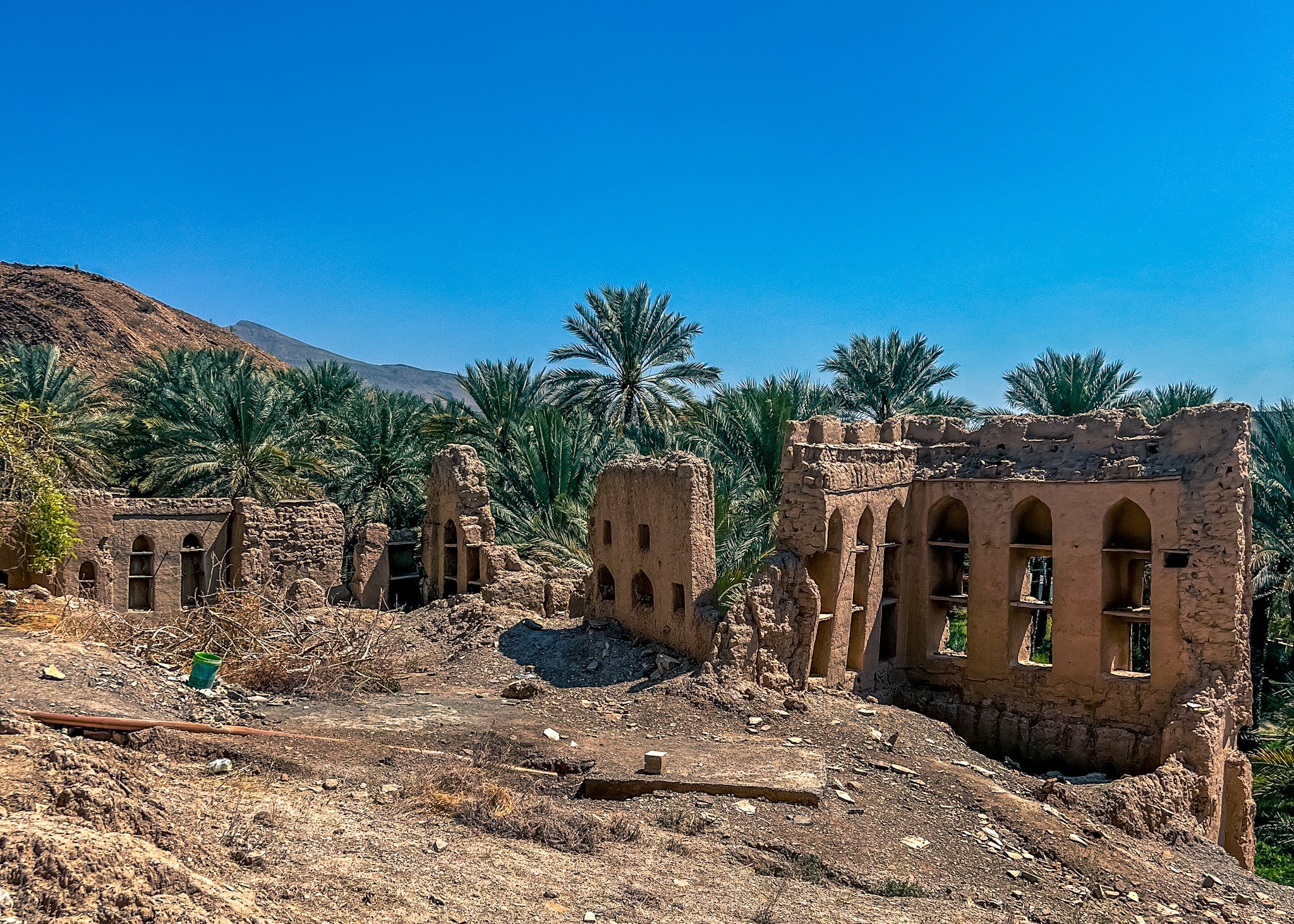
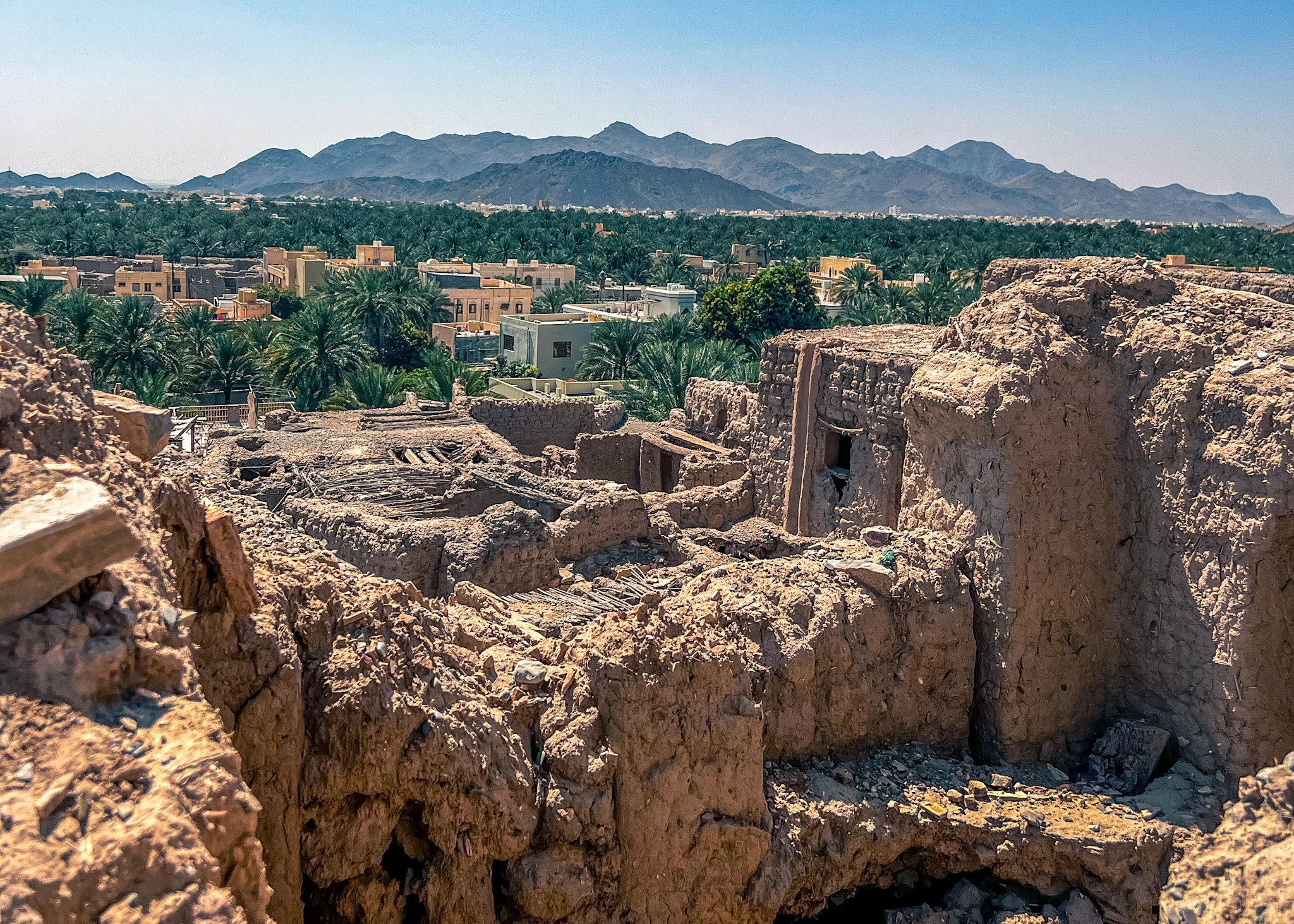
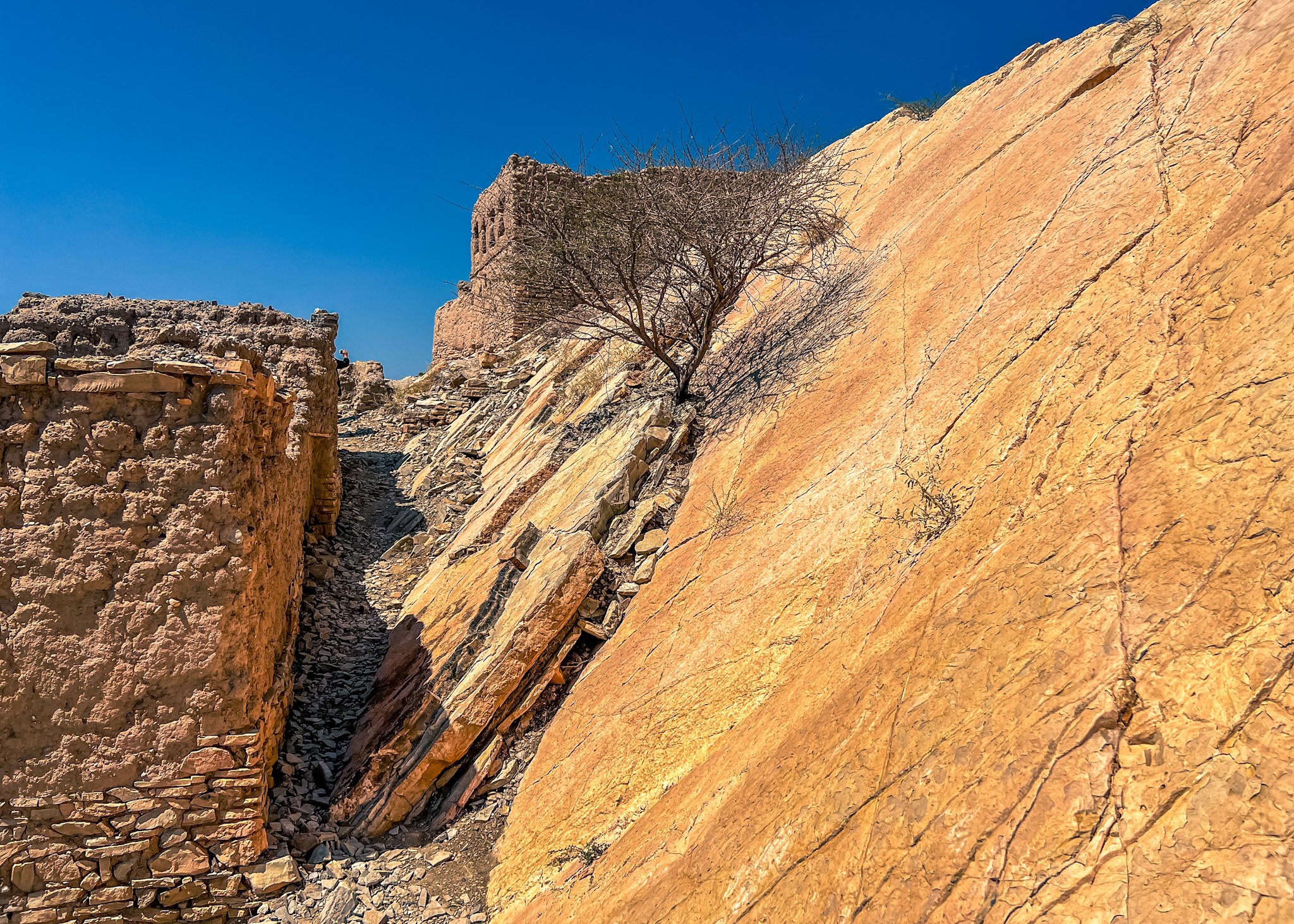
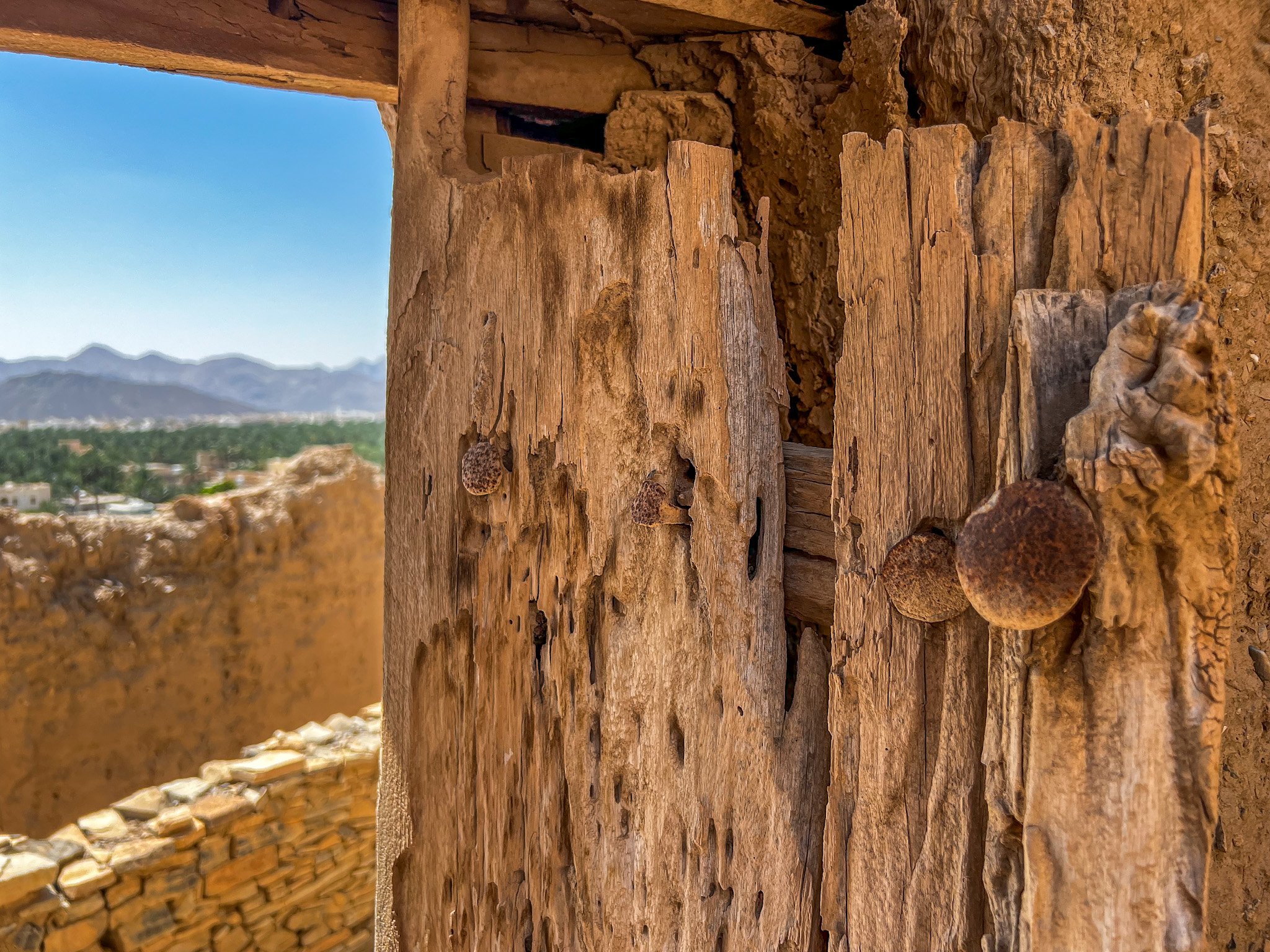
We carried on from the village on the incredibly steep road leading up the Jebel Ahkdar where we took a short walk to a stunning viewpoint over the Wadi Halfayn, and then carried on to the Suwgra (Soqrah) guest house. I could have easily spent several days relaxing here. One of the fun quirks about Oman is that the English translations vary constantly. We saw this guest house written as Suwgra, Soqrah, and Saqrah on different signs.
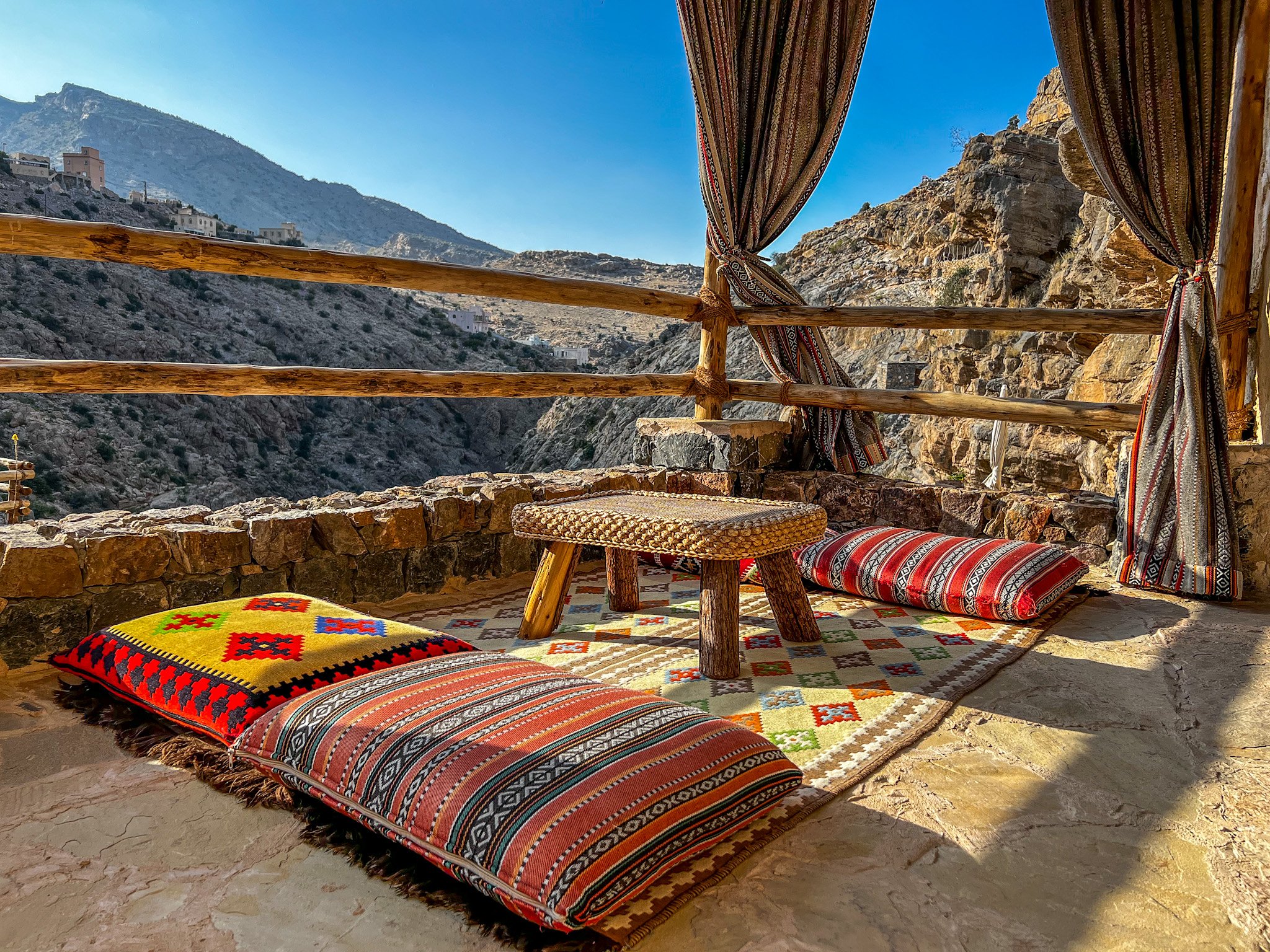
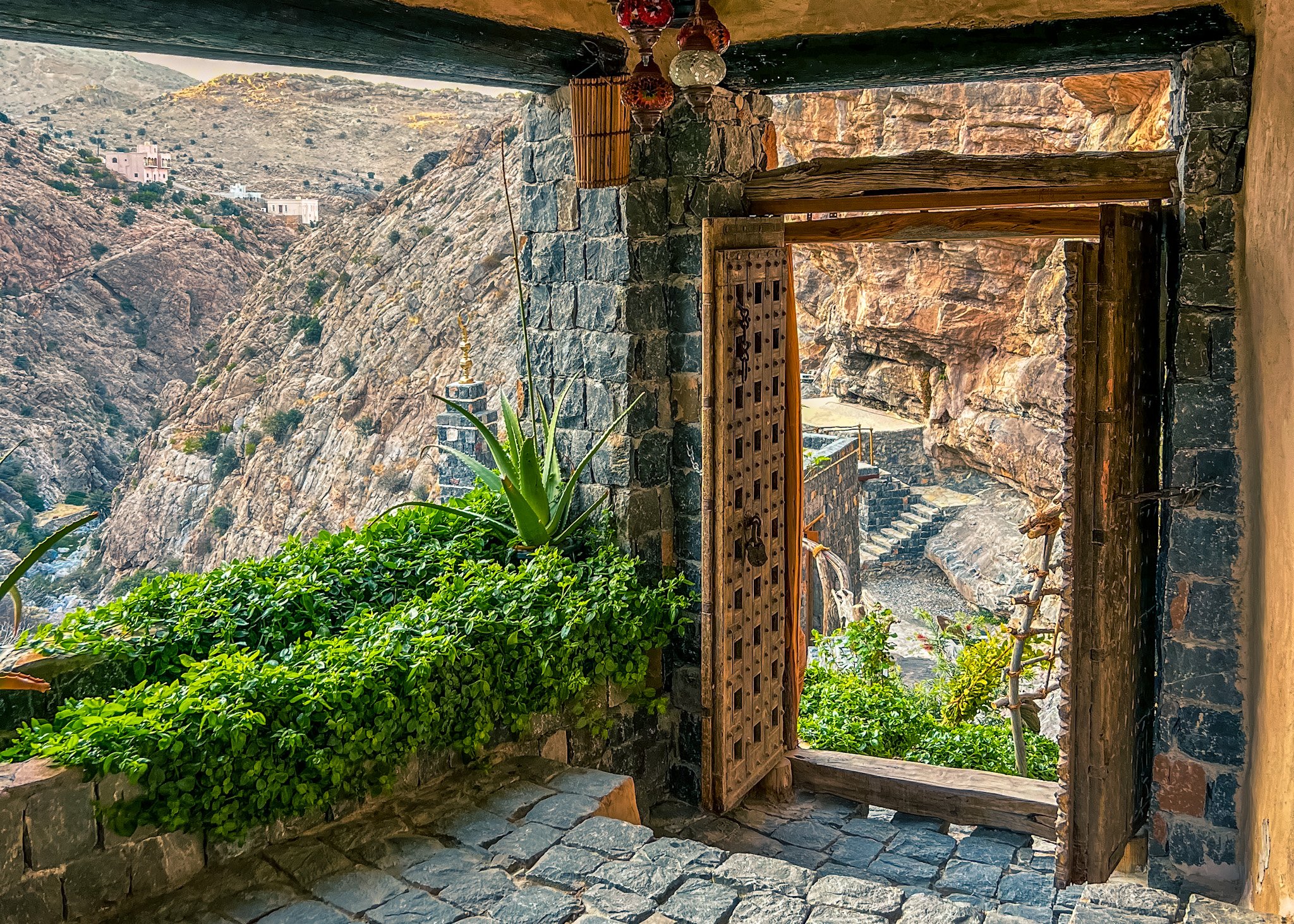
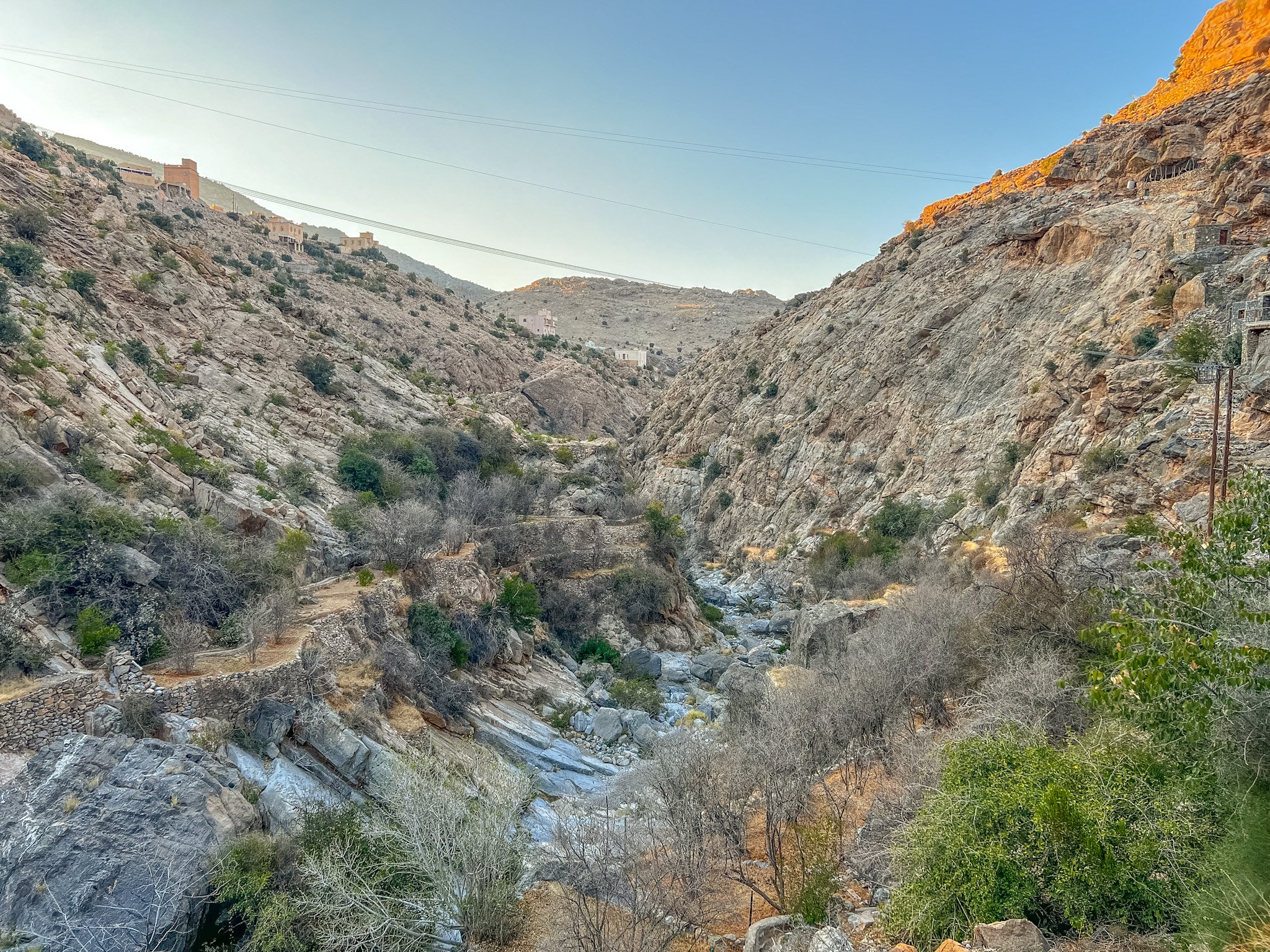
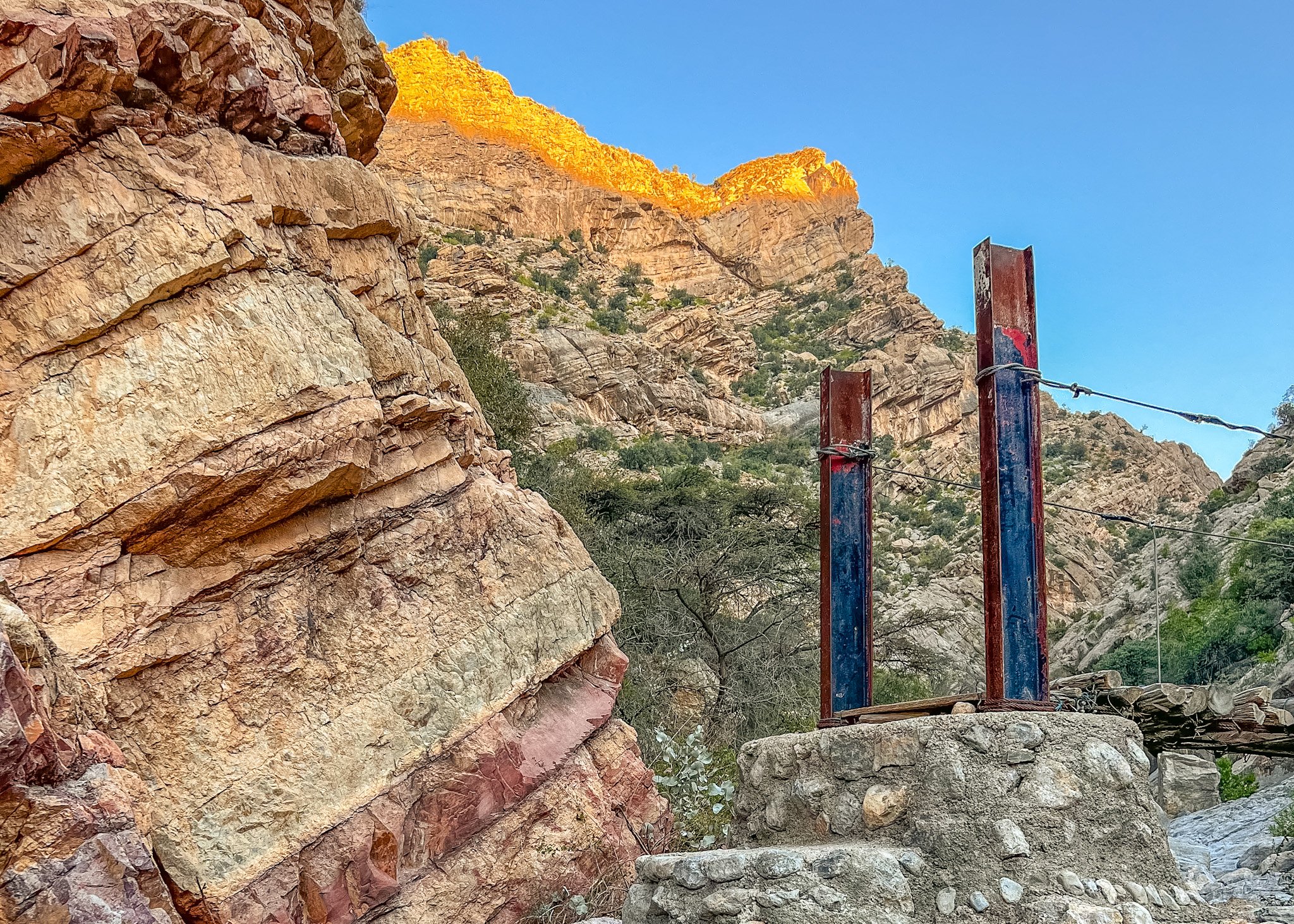
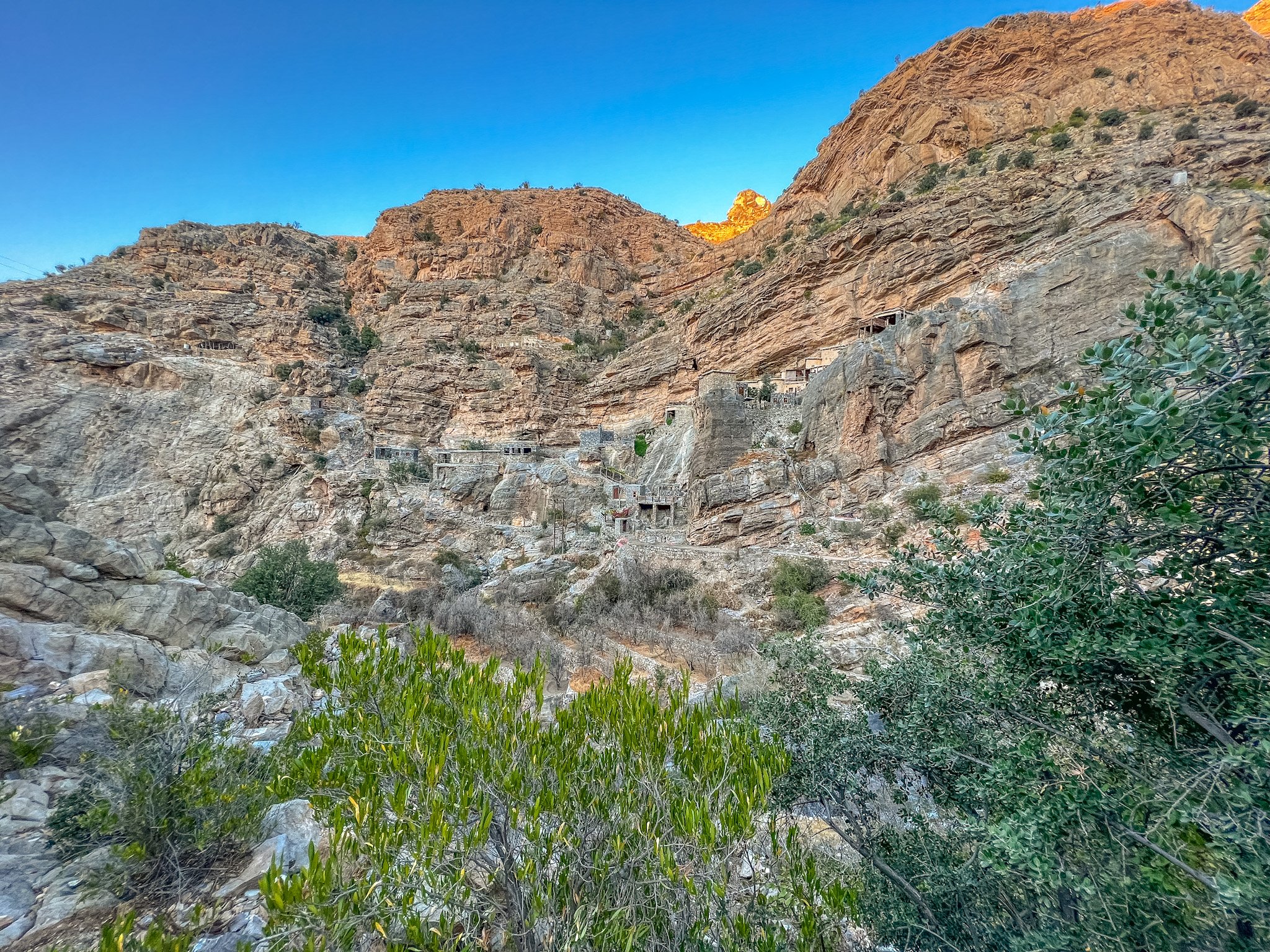
One of the unique elements of this guest house was the zip-line used to send things back and forth across the valley. While the humans were expected to climb down the stairs (and back up the other side), luggage was sent across on the zip-line, as were building supplies for the village, and even dinner for the guests which was prepared at a kitchen in the village on the other side of the valley.
I woke up early (the 11 hour time difference is no joke) and really enjoyed the peace and quiet of watching the valley lighten. I was hoping for a spectacular sunrise, but being as deep as we were in the valley, there was only a gradual lightening over time.
Donkey Trail
The next day was spent hiking on the Donkey Trail (10km D+/- 650) in the Wadi Kawar. We climbed down from the plateau, deep into the wadi to find a hidden palm grove and a number of gardens benefiting from the stream deep in the wadi bed.
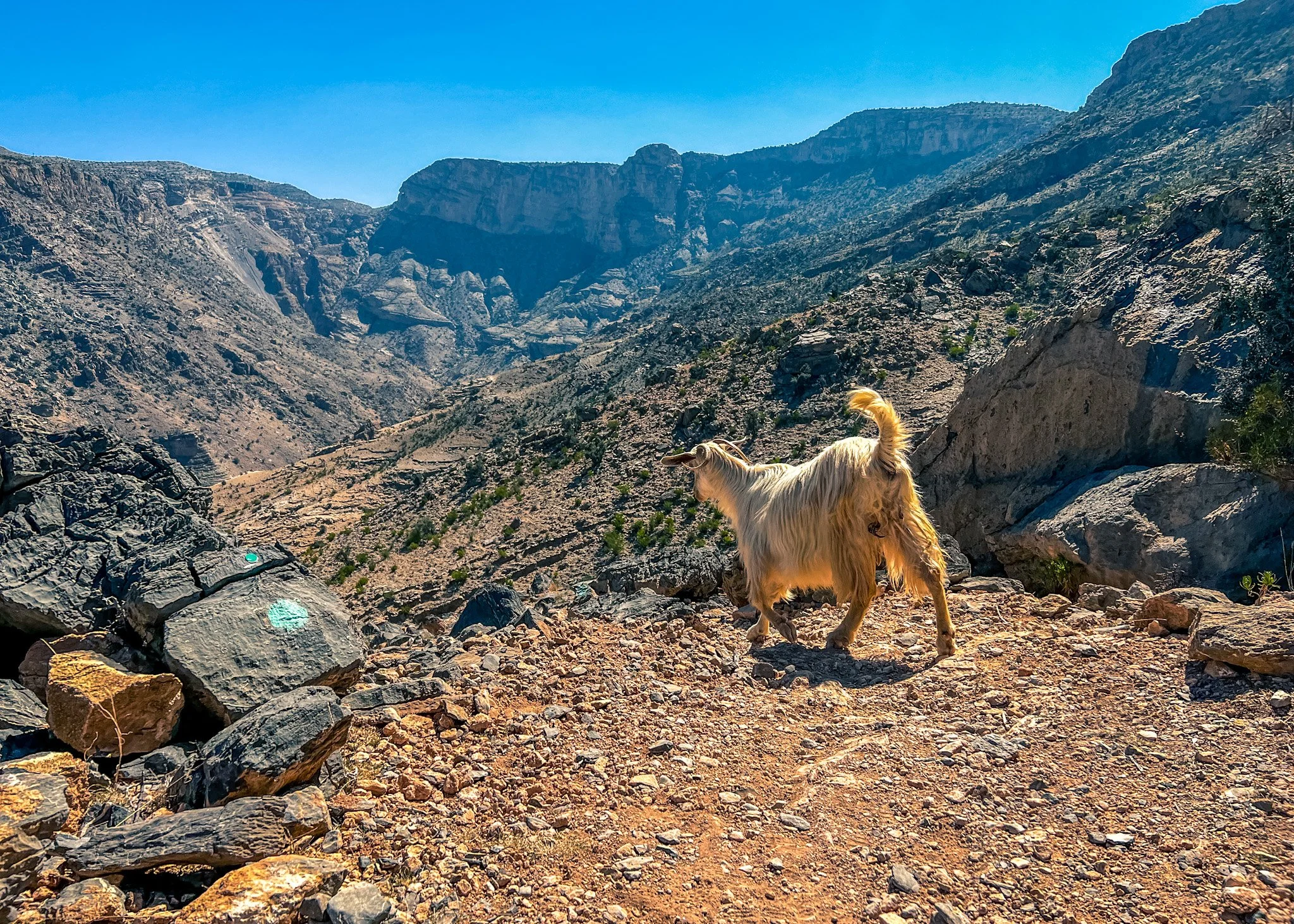
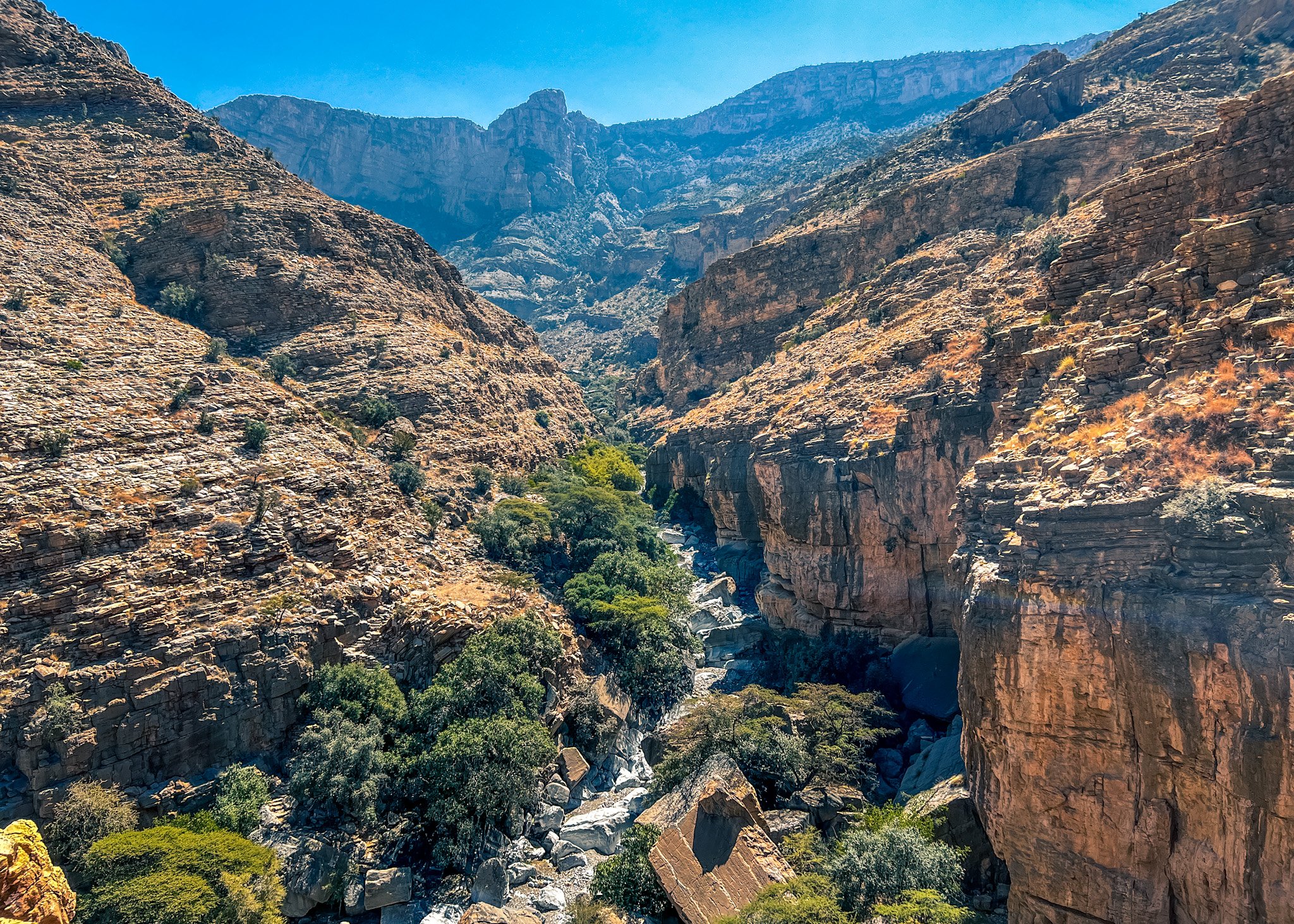
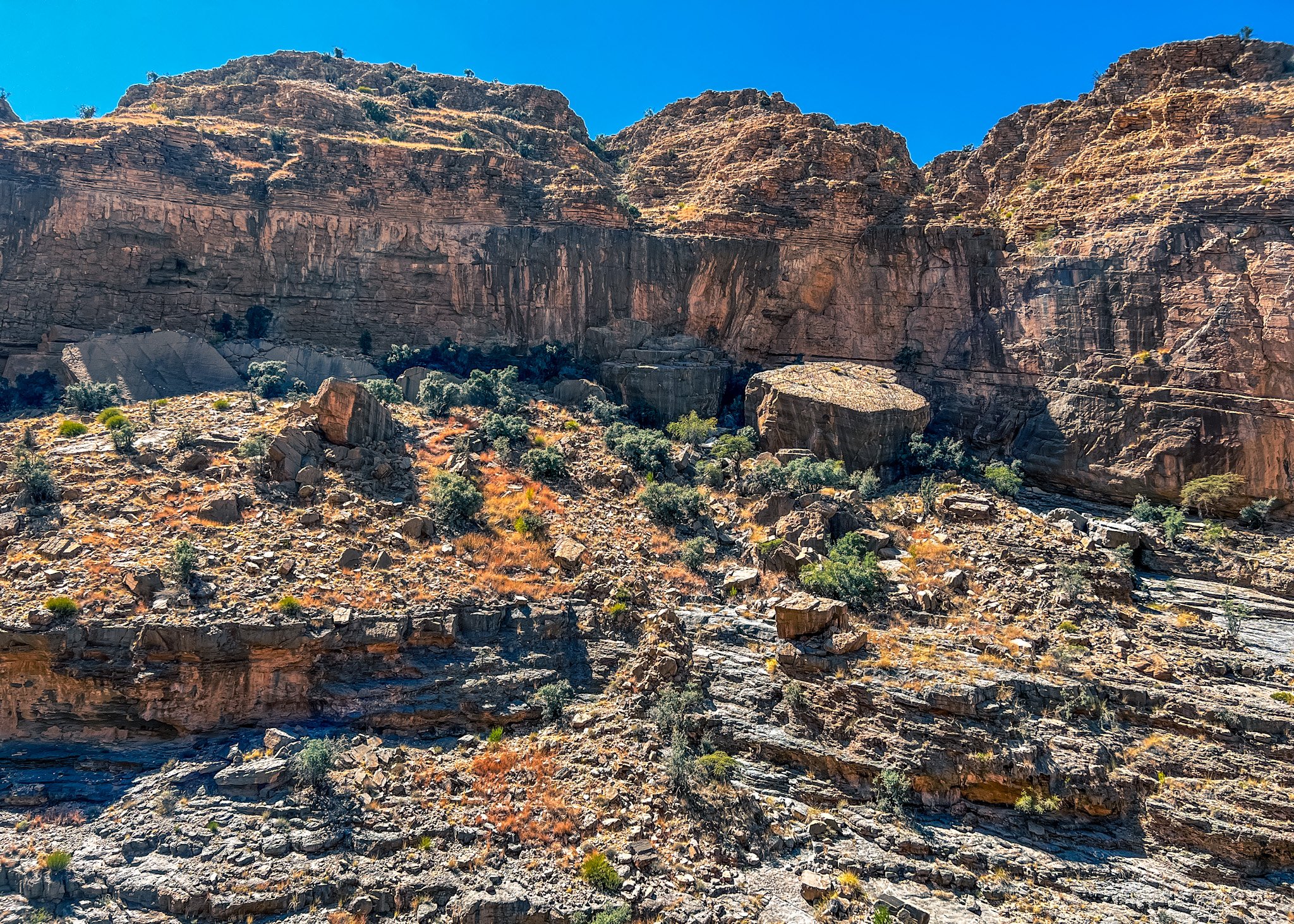
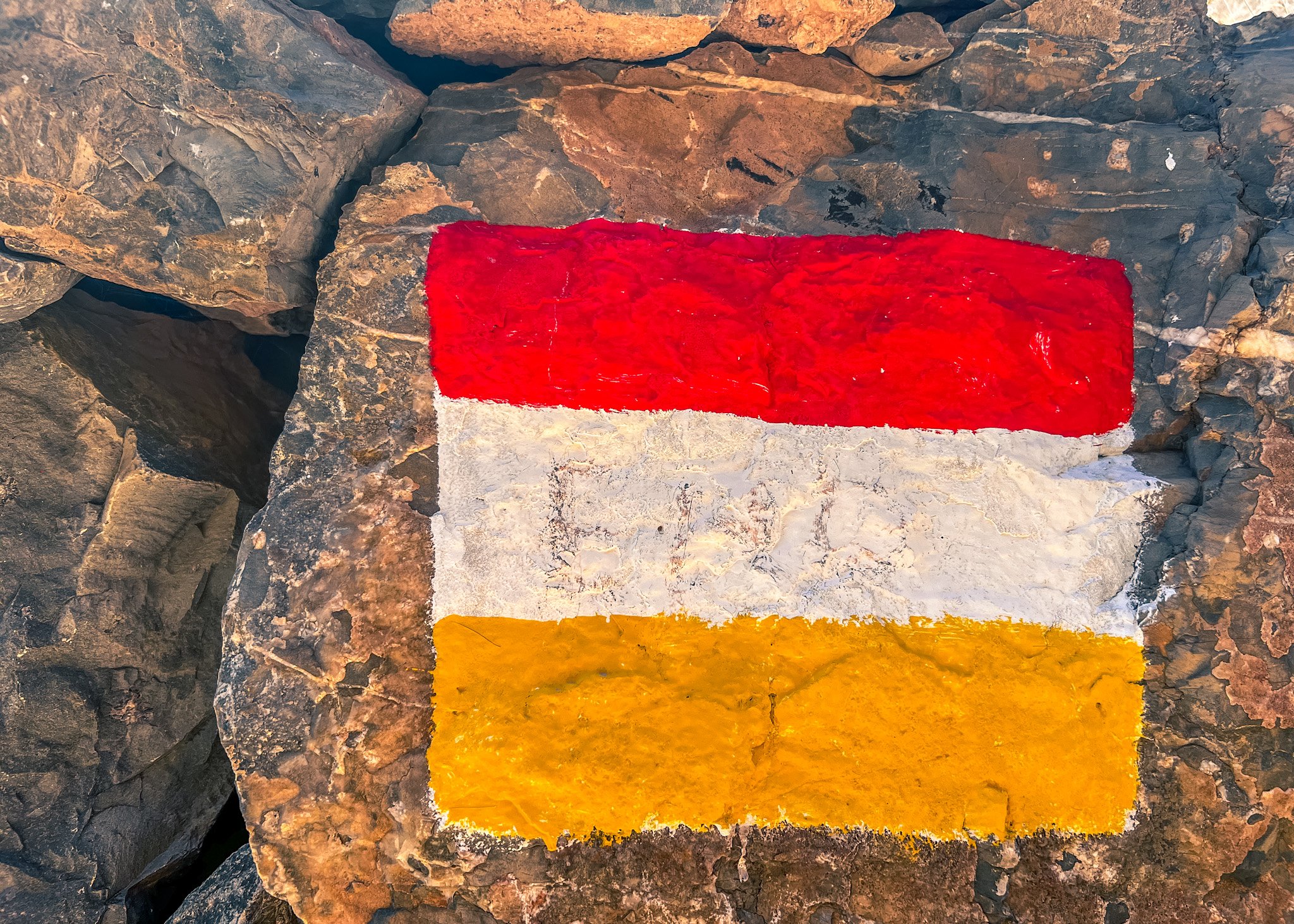
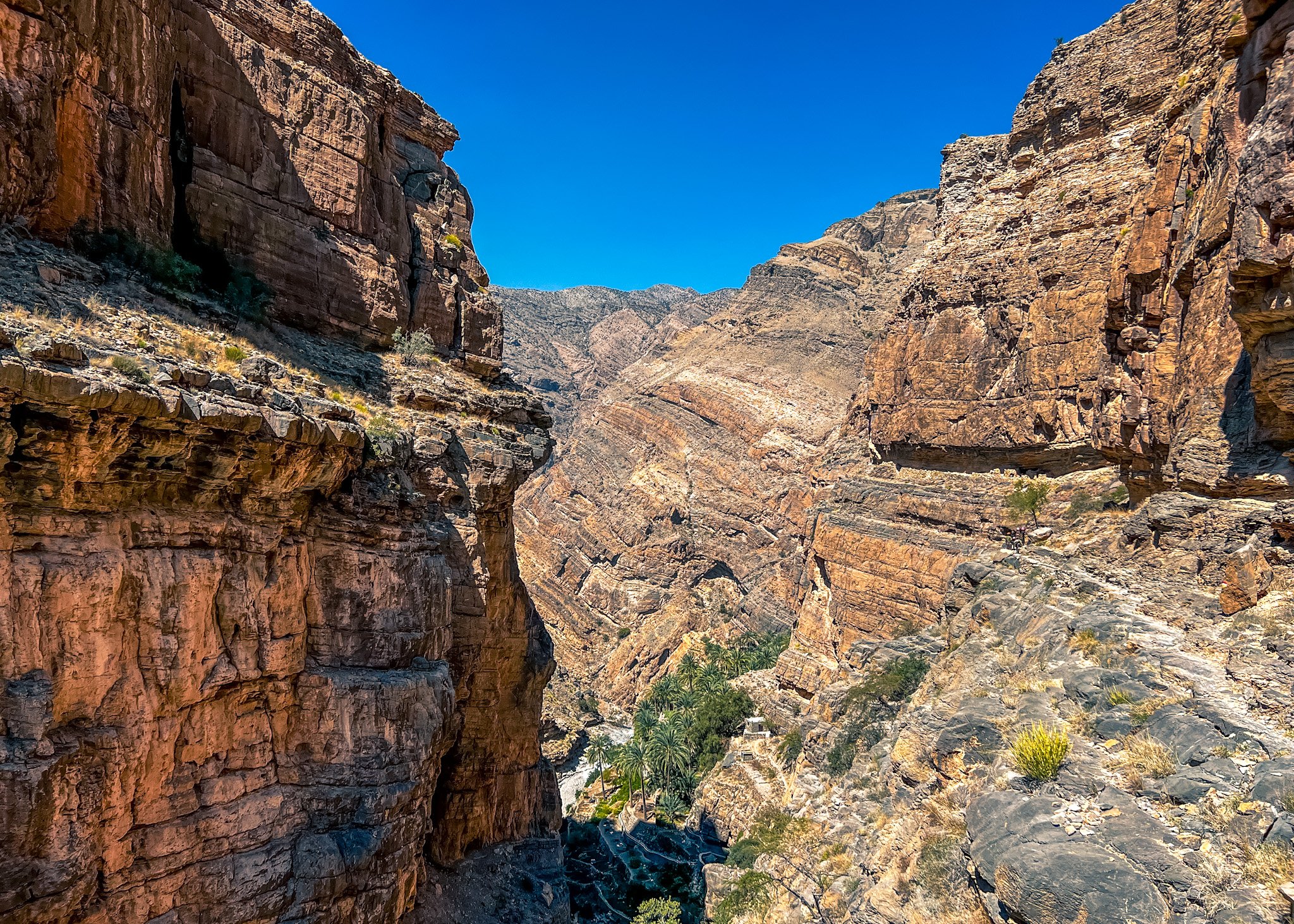
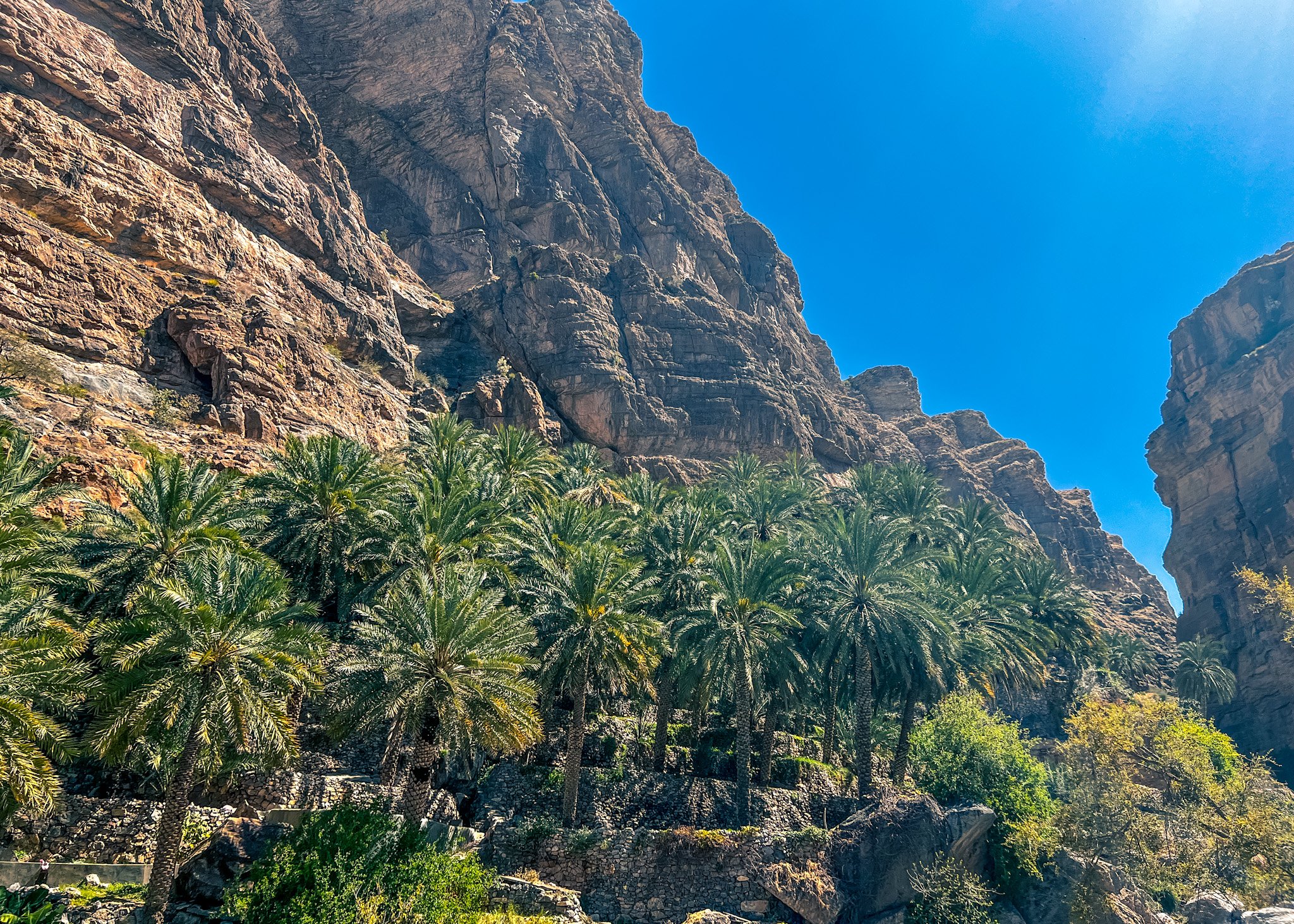
These hiking trails were well marked by the Omani government but very few seemed to be marked on sites like All Trails. In fact, one of the few trails marked on AllTrails was the old route for the Oman by UTMB ultra marathon. This overlapped with the Donkey trail for quite a stretch, and as a trail runner I have to give kudos to anyone who raced those trails in the dark.
We climbed back out of the canyon very exposed to the sun on the same trail we’d climbed down. I’d recommend an early start to this hike — we started at 10AM which meant that we were climbing back uphill in the heat of the day. Our hike took about 2:45 minutes plus an extra hour of rest time including lunch at the bottom of the canyon.
Coming back down the Jebel Akhdar after our hike, our next stop was in Nizwa. I would say that the Nizwa souk was not worth the stop compared to the very cool souks in Muscat - there were fewer shops with much less variety in items. I’d recommend skipping it and spending more time hiking in the mountains.
Bahla Fort
From Nizwa we carried on to the Town of Bahla where we visited the old Bahla Fort. This fort was also in great shape and fun to wander around, and we had great fun guessing what the rooms were used for. Archeology and museum-type history is pretty underdeveloped in Oman, and according to the Fort employees, they don’t know much about who lived at this fort or how they used it.
Jebel Shams
Finally, we climbed back up into the mountains to visit Jebel Shams, where we had a fantastic view from the Sama Cliff Guest House down into the “Grand Canyon of the Middle East.” This is where you get the spectacular sunrise view, although, being at the start of the well known (and delightful) Balcony Walk, there were plenty of other tourists out trying to catch a sunrise or sunset hike.
I spotted a number of people from Oman and the nearby UAE who were car camping on the ridge, and I have to admit, I was a bit envious. The locals have clearly matched the camping to the terrain and several people had some very cozy looking rooftop tent setups rigged on their SUVs to avoid setting up tents on the rocky ridge.
Our big hike on this plateau was to the peak of Jebel Shams — a 22km round trip hike up to the 2nd highest summit (the first is occupied by a military base). This was a great hike with excellent views into the canyon that probably deserves its own write up. We didn’t see any other hikers all day, although, as everywhere in Oman, we enjoyed the company of the goats and donkeys.
I spotted a number of people from Oman and the nearby UAE who were car camping on the ridge, and I have to admit, I was a bit envious. The locals have clearly matched the camping to the terrain and several people had some very cozy looking rooftop tent setups rigged on their SUVs to avoid setting up tents on the rocky ridge.
Our big hike on this plateau was to the peak of Jebel Shams — a 22km round trip hike up to the second highest summit (the first is occupied by a military base). This was a great hike with excellent views into the canyon that probably deserves its own write up. We didn’t see any other hikers all day, although, as everywhere in Oman, we enjoyed the company of the goats and donkeys.
Driving
Getting around Oman is fairly easy - our rental car was easy to find in their beautiful modern airport - all the main rentals companies were represented. Highway driving outside the city is great. Roads and in fantastic condition, GPS is easy to follow, and there are plenty of roadside gas stations.
Navigating in the city is a bit more complicated for those unaccustomed to driving in the Middle East. You’ll need to be ready for big traffic circles (roundabouts), to make tight u-turns and if you miss an exit in Muscat you will likely need to go several kilometres out of your way to find the next exit where you can backtrack. The main corniche is crowded, with at least one full lane at a standstill for drop-offs and pick-ups. None of this will be a surprise if you’ve driven elsewhere in the Gulf.
The really fun driving happens in the mountains — you’ll need a 4x4 for this as the Omani police will not let you continue up into the mountains without one. While the main roads up into the mountains are well paved and switchbacked, they are also wildly steep and require 4WD to even make the climb. Coming down is a whole other experience — you’ll need to know how to engine brake to avoid overheating your brakes and needing to take advantage of the (many) bail out ramps.
In the mountains proper, the roads turn to dirt and there are very long and steep climbs and descents. The views into the canyons are absolutely spectacular and make up for the white knuckle ride.
Weather
March was a good month to visit Oman. While Muscat was warm and muggy, the mountains were cooler, and at altitude I even found it helpful to have a puffy jacket at night. The heat and sun were still intense during the day and I ended up with a couple uncomfortable sun burns in places I forgot to reapply sunscreen (tips of the ears anyone?)
Clothes
Per official Omani rules, both men and women should have their knees and shoulders covered. Unsurprisingly I found that Muscat — where there were more tourists — was less rigid about this. In the mountains and rural towns I found it handy to have a light long sleeve shirt that I could throw over top of my t-shirt. You can swim in a regular swimsuit at hotels and beach resorts near Muscat, but in the wadis they ask that you wear longer shorts and sleeves.
The need for longer hiking clothes wasn’t a problem as — quite frankly — even in March the sun was intense. I’ve made the mistake of wearing shorts at similar altitude in Jasper and learned my lesson: hiking pants can save you from a world of sunburn pain.
Food
I quite enjoyed the food in Oman. The hands down favourite was the fresh lemon-mint juices that we found nearly everywhere in Muscat the larger towns. (The cafe outside the Fort was particularly good.) Dates and cardamom flavoured coffee were offered as a welcome treat every time we arrived at a guest house. My personal favourite were a sticky variety of dates that seemed to have been crushed and candied in their own juices.
The rest of the food was basic Omani or Indian food — rice, meats, lentils and flatbreads. The breakfast eggs and lentils at our first hotel were particularly good and I wish I had gotten the recipe.
Useful notes
Bring water up into the mountains — Hotels often provide a small 500mL bottle per person, but at altitude and in the heat this was far from enough water. Before leaving Muscat we stopped at a grocery store and bought two cases of bottled water, but especially with hiking we could have easily drunk twice that much. Of note, in most places there isn’t an ounce of water to filter on the trail, which means carrying quite a lot more water for hiking than I am used to.
‘Cafes’ are a good lunch stop - they typically have sandwiches, shawarma, and juices. These are more casual and easy to find that proper restaurants.
The highway gas stations typically had basic washroom facilities for men and women, but occasionally these were only for men. Typically in these cases there was a nearby restaurant with a “family” section that included washrooms for women.
Hotels were larger establishments, more likely to have swimming pools and bars (alcohol not being available in most places in Oman). We enjoyed the guest houses which were smaller establishments that typically served breakfast and dinner, with a smaller number of rooms.





